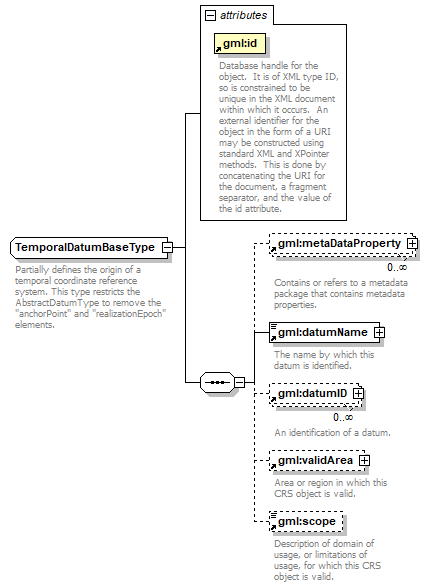| diagram |  |
||||||||||||||
| namespace | http://www.opengis.net/gml | ||||||||||||||
| type | restriction of gml:AbstractDatumType | ||||||||||||||
| properties |
|
||||||||||||||
| children | gml:metaDataProperty gml:datumName gml:datumID gml:validArea gml:scope | ||||||||||||||
| used by |
|
||||||||||||||
| attributes |
|
||||||||||||||
| annotation |
|
||||||||||||||
| source | <xs:complexType name="TemporalDatumBaseType" abstract="true"> <xs:annotation> <xs:documentation>Partially defines the origin of a temporal coordinate reference system. This type restricts the AbstractDatumType to remove the "anchorPoint" and "realizationEpoch" elements. </xs:documentation> </xs:annotation> <xs:complexContent> <xs:restriction base="gml:AbstractDatumType"> <xs:sequence> <xs:element ref="gml:metaDataProperty" minOccurs="0" maxOccurs="unbounded"/> <xs:element ref="gml:datumName"/> <xs:element ref="gml:datumID" minOccurs="0" maxOccurs="unbounded"/> <xs:element ref="gml:validArea" minOccurs="0"/> <xs:element ref="gml:scope" minOccurs="0"/> </xs:sequence> <xs:attribute ref="gml:id" use="required"/> </xs:restriction> </xs:complexContent> </xs:complexType> |
XML Schema documentation generated by XMLSpy Schema Editor http://www.altova.com/xmlspy